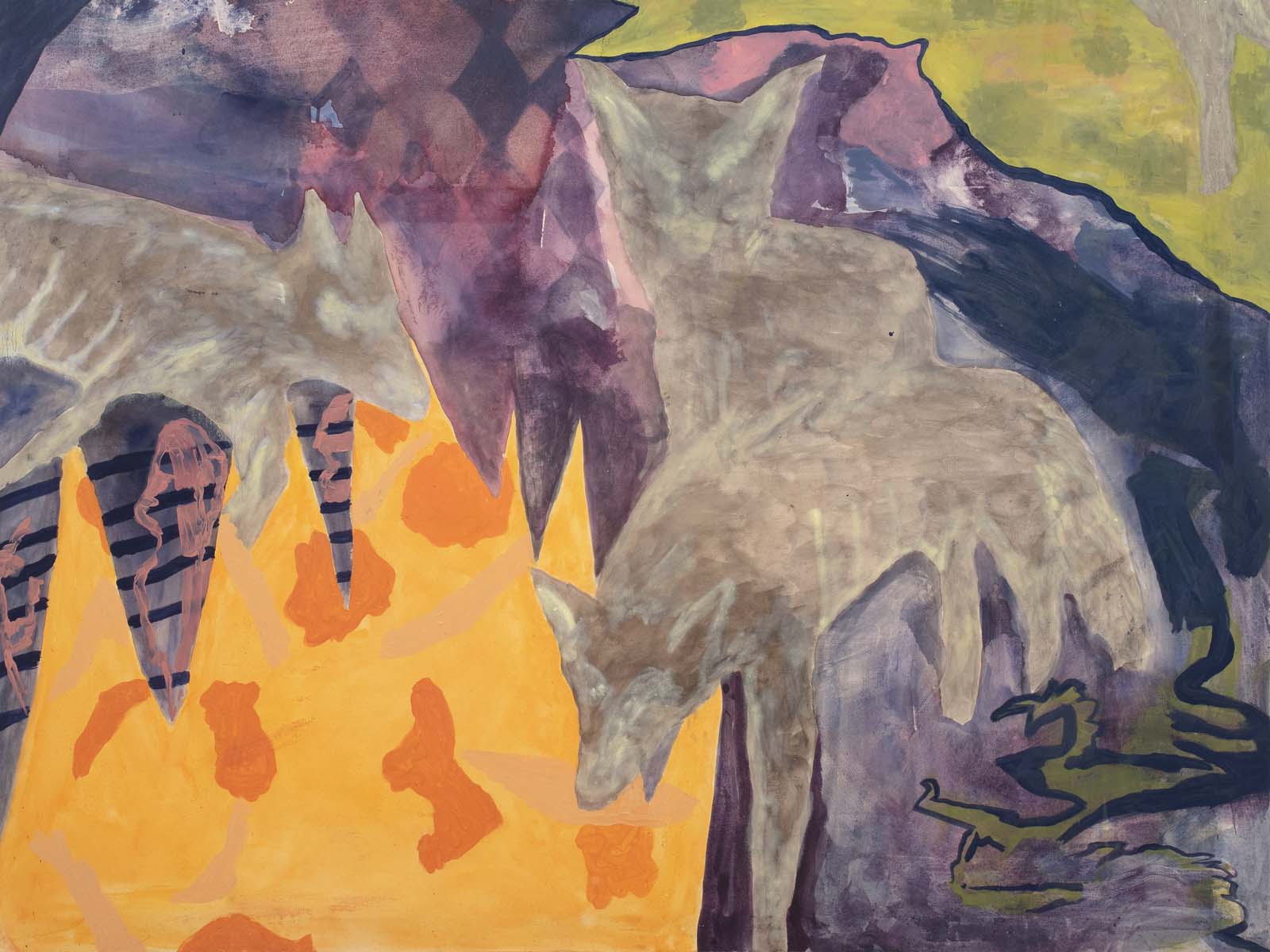Eliel David Pérez Martínez
Huir del destino
Wizard Gallery, Milan (I)
May — June 2023
Sleeping with coyotes
Daniele Capra
Huir del destino (“escaping fate”) brings together a dozen works on canvas and of an installation nature by Eliel David Pérez Martínez, which stem from a reflection on all those who are forced to flee the context in which they have lived in search of freedom, work or a decent living condition. Women and men on the run, in a manner similar to a prey that, under the eyes of the hunter, desperately tries to escape a fate that appears marked. However, it is precisely in the desperate attempt, in the precipitous rush, in fleeing while closing their eyes to everything they leave behind – aware of the immeasurable risk – that their only possible space of freedom lies. People dreaming of escaping from violence or poverty, and the hunted animal unknowingly share the same fate and vital courage. And they sleep, tired, under the same sky.
Fate is perceived as the inexorable predetermination of what happens. It is the inevitable, a preordained sequence of events beyond the capacities of man to will or do. One cannot escape it except through crazy risk or desperate and improbable attempt. Only in this way can one try to act to try to deviate or delay the succession of events, throwing grains of sand between the gears that move in connection. We can only cause a temporary slowdown of the course of events, a momentary failure, and try to take advantage of it. In its course, fate is uncontrollable, and our margins of action are very limited; yet they exist, and it is up to us to seize them. As Arthur Schopenhauer stated, “Fate shuffles the cards, but we play”. It comforts us to believe that fortune favours the bold, even though we know it is not always the case.
Huir del destino (“escaping fate”) tells of the many experiences, sometimes heard firsthand by the artist, of people from Central America who try to cross the Mexican desert to immigrate illegally to the United States, relying on simply walking and the operational support of experienced guides who know their way around that impassable environment. These men who help the illegal immigrants are habitually called coyotes because, exactly like such an animal, they must be phenomenal walkers capable of withstanding the most extreme situations, deadly heat, hunger, thirst and fatigue. The coyote-which also plays an important role in the Mesoamerican mythologies dear to the artist-is thus a metaphor for the ferryman who leads to a better future and an emblem of those who never give themselves up for defeat, managing to escape, thanks to their strength of will and their own ability to endure, from a story that is at first glance already written.
The works in the Durmiendo con coyotes (“sleeping with coyotes”) series originate as a narrative, minimal and dry, built on the abandoned objects of migrants crossing the desert. They are simple garbage, plastic bottles, blankets and forgotten clothing, traces of a presence and a quick passage that Pérez Martínez outlines with an essential language, with liquid, intense colours and a sparse but vivid figuration. In his canvases elements of Mexican folk tradition, geometric patterns, bad painting and narrative rigour mix freely, in a sunny, Latin cocktail, at times almost lysergic. From time to time coyotes, birds, a fox appear on the canvas, silent witnesses to the path of the many illegal immigrants fleeing their condition and, at the same time, symbols of a life that, despite a thousand endless adversities, never stops continuing.
The practice of the Mexican artist is based on the use of the medium of painting and fabric, which are employed both in two-dimensional form and in sculptural mode. Her works are characterized by bright colours and vibrant backgrounds, frequently animated by fluid forms and geometric patterns. In Pérez Martínez’s works, portions of painted canvas, fabric cut-outs, and rags alternate freely, producing a particular blend in which patterns, aniconic geometries, and figures are juxtaposed. The subjects depicted are often defined by essential outlines, with many details left to the observer’s imagination. The figuration appears liquid and anti-descriptive, allusive, but at the same time elusive.
Pérez Martínez’s research is poetically motivated by a sociopolitical investigation, an aspect that is never too openly exhibited or declared in his works. The recurring themes of his research have to do with his own personal experience, the cultural experiences of Mexico, and social criticism, originating from the analysis of cultural, anthropological and economic factors.











